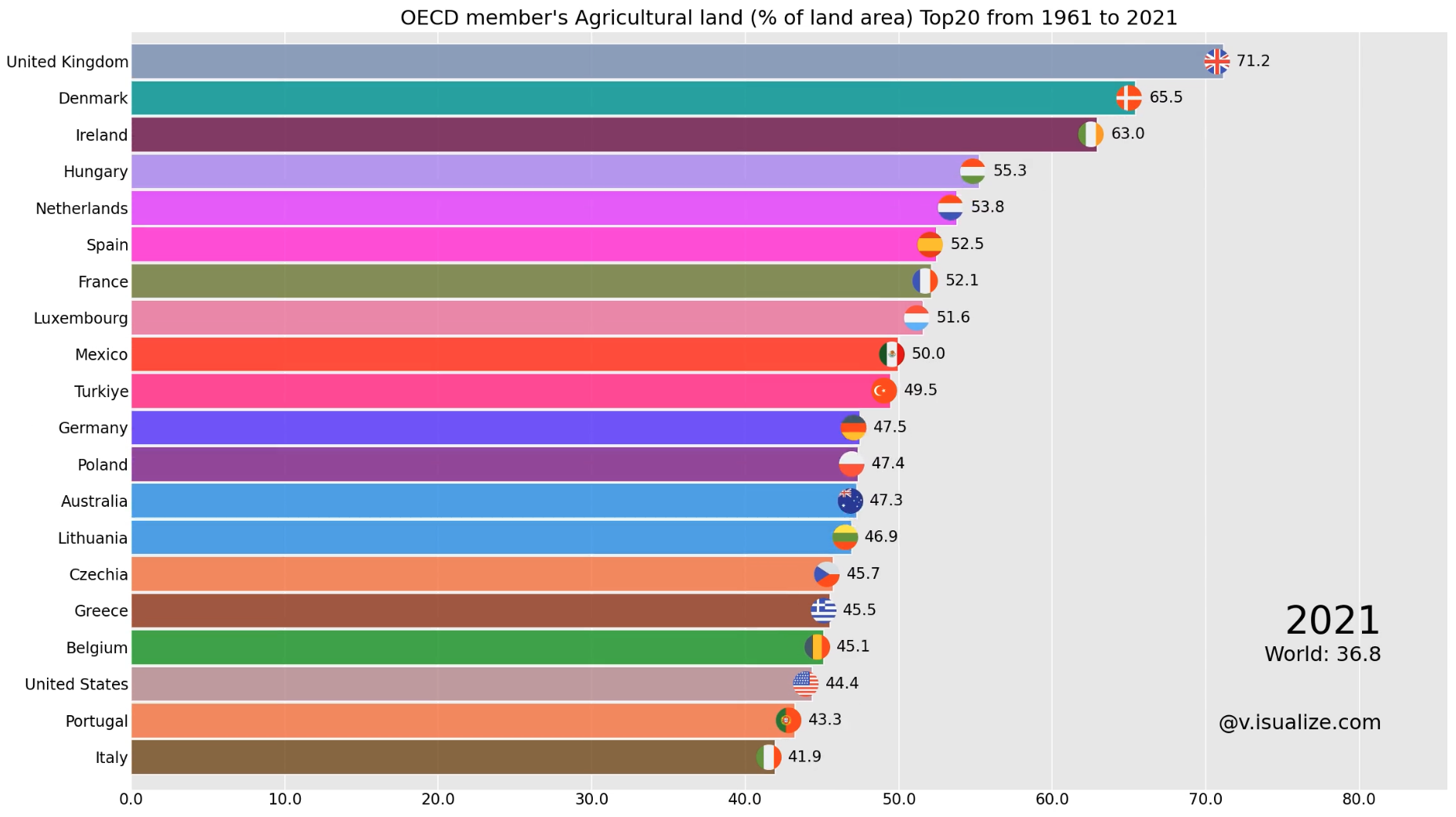Agricultural land refers to the share of land area that is arable, under permanent crops, and under permanent pastures. Arable land includes land defined by the FAO as land under temporary crops (double-cropped areas are counted once), temporary meadows for mowing or for pasture, land under market or kitchen gardens, and land temporarily fallow. Land abandoned as a result of shifting cultivation is excluded. Land under permanent crops is land cultivated with crops that occupy the land for long periods and need not be replanted after each harvest, such as cocoa, coffee, and rubber. This category includes land under flowering shrubs, fruit trees, nut trees, and vines, but excludes land under trees grown for wood or timber. Permanent pasture is land used for five or more years for forage, including natural and cultivated crops. (World Bank)
Reasons behind trends:
- Stable or Slightly Declining Agricultural Land Use: Many OECD countries have experienced a stabilization or slight decline in the percentage of land used for agriculture. This trend is often due to urbanization, industrial development, and shifts towards more intensive farming practices that require less land.
- Increased Productivity: Technological advancements have led to significant improvements in agricultural productivity. Countries like the United States, France, and Germany have adopted precision farming, genetically modified crops, and advanced irrigation systems, allowing for higher yields from smaller areas.
- Sustainable Practices: There has been a growing emphasis on sustainable agricultural practices. Countries such as Denmark, Sweden, and the Netherlands are known for their efforts to implement organic farming, reduce chemical use, and improve soil health, contributing to more efficient land use.
- Policy and Economic Shifts: Agricultural policies and economic changes have also played a role. For example, in countries like Japan and Korea, economic development has shifted labor away from agriculture towards manufacturing and services, leading to a decrease in agricultural land use.
Source: THE WORLD BANK, OECD



Comments